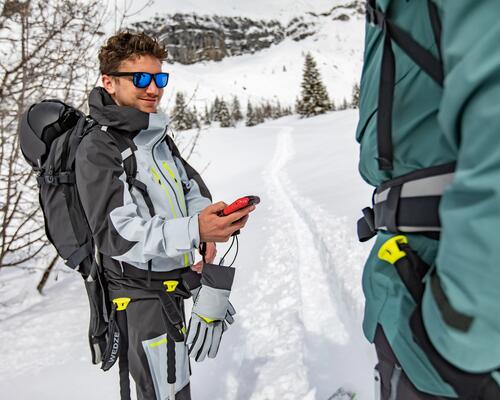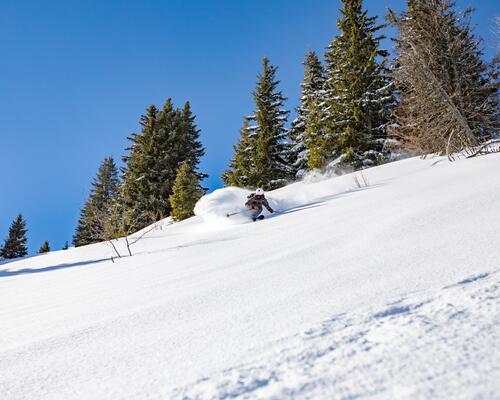Significantly heavier, weighing between 1000g and 1800g per pair. However, they provide optimal security. It is an interesting compromise between the low-tech binding and the alpine binding. These ski bindings offer a classic insert stop with a heel piece very similar to alpine bindings. This type of ski binding is often intended for people looking for comfort and safety when skiing downhill thanks to the elasticity of the binding which allows it to absorb shocks.
There are 3 types of hybrid ski bindings:
- Hybrid ski bindings with rotational stops : As with the Low Tech, the DIN release value is always set on the heel piece. On the other hand, the front stop is mounted on a spring system allowing a small amount of play in rotation. This system improves lateral release in the event of a fall, due to the varying degrees of elasticity of the binding.
- Hybrid ski bindings with DIN release value adjustment on the stop : These ski bindings have an improved stop with the possibility to adjust the DIN release value on the front stop, in addition to the adjustment on the heel piece.
- Hybrid ski bindings with a so-called classic heel piece : it has a classic insert stop (pins) for easier walking and the heel piece is similar to an alpine ski heel piece (with climbing wedges). A system that improves the reliability of the removal of the boot and the support of the ski boot during the descent. This ski binding is only compatible with certain touring ski boots because of its heel piece without insert.











